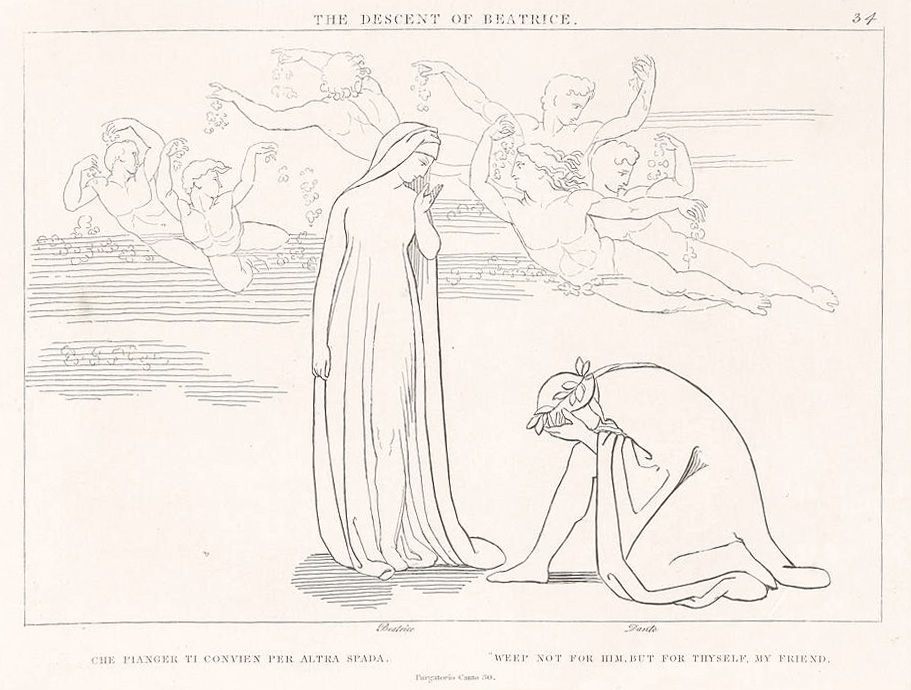Beatrice

In his commentaries on Dante, Giovanni Boccaccio tells us that Beatrice Portinari (1265-1290) is the woman behind the literary Beatrice. Dante first saw Beatrice Portinari when he was nine, and later after she had married a Florentine banker, they had an encounter in the street. This seemingly trivial moment when Dante met Beatrice’s eyes through her veil would have lasting meaning for the young poet. Beatrice Portinari died at the age of 24 casting Dante into a world of grief in which he could only be consoled through literature. Beatrice appears in Dante’s La Vita Nuova and in The Divine Comedy; a beloved figure, she can be read as both a Florentine woman and a symbolic device. From her position in Heaven, it is Beatrice who sends the pilgrim Virgil to guide him through Hell and on to reach the highest of places.

In the image above, Elizabeth Siddal - a Pre-Raphaelite poet and model - embodies Beatrice as Dante's muse. Rossetti, who took the first name Dante after the 14th century poet, also used the Vita Nuova as his inspiration for this image. Siddal is depicted as Beatrice praying at the moment in which she dies, as described in the text. The original painting was created a year after Elizabeth Siddal, Rosetti’s wife, had herself died.
In The Divine Comedy Beatrice is presented as an idealised woman rather like the Madonna, who guides Dante through the nine celestial spheres of heaven. The first sphere is the moon, which in canto II Dante and Beatrice enter. Likewise, in Heinrich Aldegrever's engraving on the right, the Madonna ascends into heaven standing on the crescent moon. Scholars have also interpreted her as the ‘Woman of the Apocalypse’ because she is clothed with the sun and has the moon at her feet.
Flaxman's image below depicts Beatrice having descended from Heaven in a chariot which is surrounded by angels who are singing and scattering flowers. Dante recognises her and begins to feel the power of love. He turns for his guide Virgil, who is now absent. Virtuous but unbaptised, and therefore a resident of Limbo, Virgil is an allegorical embodiment of man's logic and reason: he can proceed no farther, and Dante weeps. Instead Beatrice, who is an embodiment of divine love, must guide Dante into God’s presence in Paradise. She reproaches him for his grief and sin so that his journey may continue.
